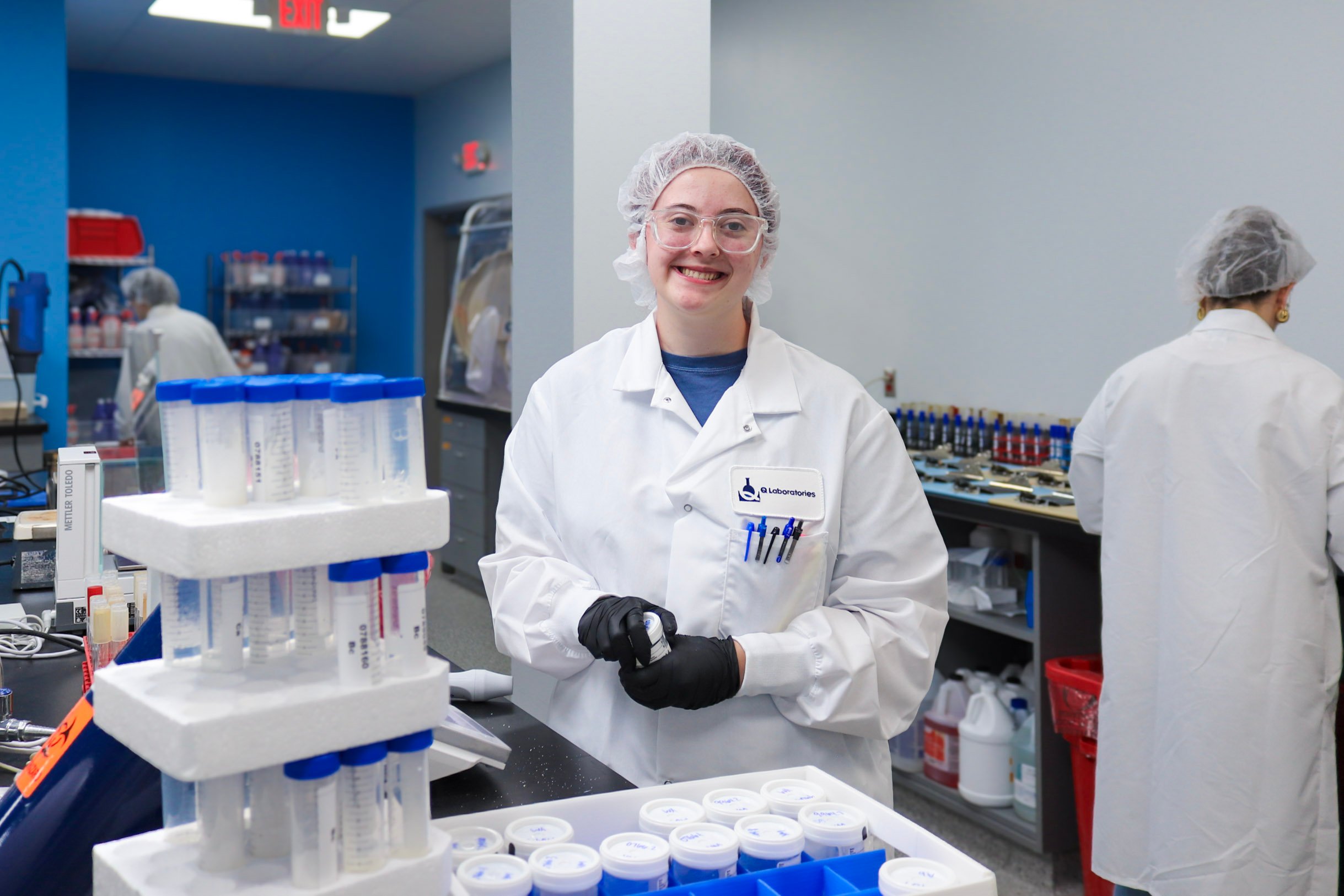Samples vs. Test Portions: What’s the Difference?

Following our previous blog and webinar, "Validation of Alternative Methods for Larger Test Portion Sizes: The Bigger the Better?", we received many questions about the concept of sampling and its impact on laboratory methods. To address these questions, we felt it important to clarify the relationship between sampling and method selection—and why this distinction is critical for our industry customers when determining fit-for-purpose methods for their products. Put simply, to effectively explain the “why,” we must first define the “what.”
But first, Definitions!
"What is the Difference between a Sample vs. a Test Portion?" Great question! In food safety, the terms “sample” and “test portions” are often used interchangeably, but they actually refer to distinct concepts in the context of microbiological testing and standards like ISO 6887, a multi-part international standard that provides guidelines on the preparation of test samples for microbiological examination, including the portion size used for testing.
Here we breakdown of the difference:
Sample
- Definition: A sample is the larger unit of food or environmental material that is collected for testing. It’s typically representative of a batch, lot, or environment and is meant to reflect the condition of the whole.
- Example: You might collect a 500g sample of ground beef from a processing line to assess for contamination.
- Purpose: The sample serves as the source material from which one or more test portions are drawn. It ensures that testing is based on a representative cross-section of the product or environment.
Test Portion
- Definition: A test portion is the specific amount of material that is actually used in the lab test. It’s weighed or measured from the sample and used to perform microbiological or chemical analyses.
- Example: From the 500g ground beef sample, you might prepare a 25g test portion to test for E. coli or Listeria monocytogenes.
- Purpose: The test portion is what’s diluted, incubated, and analyzed. It must be representative of the original sample to ensure accurate and reliable results.
Why the Difference Matters
Understanding the distinction helps ensure proper sampling protocols and accurate testing results. Here's why it’s important:
| Aspect | Sample | Test Portion |
|
Function |
Collected to represent a product or lot |
Subset used in the actual test |
|
Size |
Usually larger (e.g., 100g – 1kg or more) |
Smaller (e.g., 10g – 100g) |
|
Standardized? |
Sampling method may be defined by regulation |
Test portion sizes often defined by standards or validated method (e.g., ISO 6887) |
|
Impact |
Poor sampling = bad representation |
Poor test portion = bad detection sensitivity |
Bonus: Composite Samples
Sometimes, samples from multiple locations or units are combined to form a composite sample, which is then subsampled to create test portions. This strategy increases efficiency and detection range while minimizing costs.
Why Composite Testing is Crucial in Food Safety
In the world of food safety, precision and thoroughness can mean the difference between public health and a widespread foodborne illness outbreak. Among the many tools used to safeguard the food supply, composite testing can be a very effective tool in the toolbox. But what exactly is composite testing, and why is it so important? While much attention is given to the types of organisms being tested and the methods used, an often-overlooked factor is the amount of sample used for analysis. Larger test portions, specifically for pathogen detection, can significantly improve the accuracy and reliability of food safety plans.
What is Composite Testing?
Composite testing is a method used in food safety and quality control where multiple individual samples are combined into a single "composite" sample. This consolidated sample is then the test portions used for analysis. If the composite test comes back negative, all the individual components are presumed to be safe. If it's positive, each individual sample is retested as a separate test portion to identify the source of contamination.
The Efficiency Advantage
One of the biggest advantages of composite testing is efficiency. Testing every single unit or sample in large-scale food production is not always practical or cost-effective. Composite testing allows food safety labs to screen a broad sample set quickly, conserving both time and resources while still maintaining a high standard of safety monitoring.
For example, in a lot of 100 food packages, combining ten groups of ten samples each into composites can reduce the number of initial tests from 100 to 10. If one composite flags an issue, only that subset needs further testing—streamlining the investigation process.
Increased Surveillance, Lower Cost
Composite testing is a budget-friendly way to increase the breadth of food surveillance. Especially in developing regions or small-scale operations, the cost of extensive food testing can be prohibitive. Composite methods allow for wider testing coverage without a proportionate rise in cost, enabling more comprehensive food safety practices across the board.
Early Detection = Faster Response
Speed matters when it comes to foodborne illnesses. The faster a contaminant is detected, the quicker the response can be. Composite testing allows producers and regulators to spot issues early in the production or distribution process—before contaminated products reach consumers. That’s crucial not only for public safety but also for protecting brand integrity and avoiding costly recalls.
Risk Reduction in High-Stakes Products
Composite testing is especially valuable in high-risk products such as raw meats, dairy, leafy greens, and ready-to-eat meals. These categories are more prone to harbor harmful bacteria like Salmonella, Listeria, and E. coli, and thus require rigorous monitoring. Composite sampling adds a layer of scrutiny that helps identify problems that might be missed with less frequent or less systematic testing methods.
Best Practices for Composite Testing
While composite testing is powerful, it must be implemented thoughtfully:
- Homogeneous Mixing: Samples must be thoroughly mixed to ensure accurate representation of all included units.
- Proper Ratios: The volume of each sub-sample in the composite should be consistent and controlled.
- Follow-Up Protocols: A clear plan should be in place for retesting individual samples if a composite test returns a positive result.
Why Test Portion Size Matters
At its core, food safety testing is a numbers game. Many pathogens, such as Listeria monocytogenes or Salmonella, are often unevenly distributed in food products—especially in raw or minimally processed foods. Testing too small of a sample risk missing contamination entirely, leading to false negatives that can have dangerous consequences.
By increasing the test portion size of a representative sample type, you effectively reduce the likelihood of overlooking these “hot spots” of contamination. This is particularly important in:
- Low-moisture foods where pathogens may be present in very small quantities but can still pose serious health risks.
- Ready-to-eat (RTE) foods where there is no further kill step before consumption.
- Environmental monitoring where sampling larger surface areas improves detection of sporadic contamination.
Balancing Cost and Accuracy
Of course, there’s a balance to strike. Larger test portions can require more media, more labor, and longer processing times. But in high-risk scenarios or for high-value products, that extra investment can be well worth it. Consider it an insurance policy against the much higher cost of a recall, regulatory action, or damage to your brand.
Final Thoughts...
Food safety is a complex puzzle where sampling and test portion sizes are crucial to fit for purpose testing. As technology evolves and food systems are more globalized, the role of composite testing will only become more critical in ensuring that the food on our plates is safe, clean, and trustworthy.
Want to learn more about how we can help? Let’s chat about how to make it practical and impactful for your team. Contact us at www.qlaboratories.com



